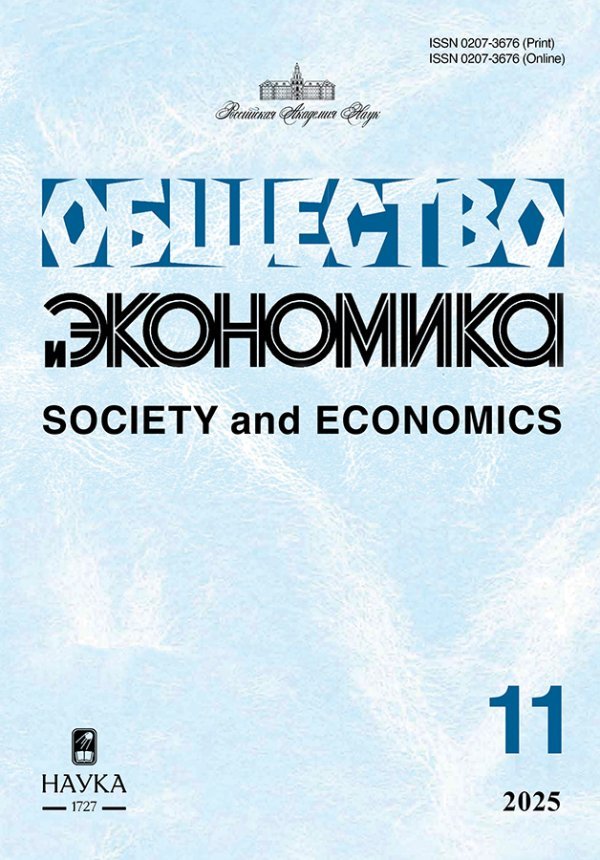Eastern and western directions of labor of labor immigration to Russia: historical markets and prospects
- Authors: Sedlov A.1
-
Affiliations:
- Institute of Economics (RAS)
- Issue: No 12 (2024)
- Pages: 46-64
- Section: SOCIAL ISSUES
- URL: https://rjsvd.com/0207-3676/article/view/682702
- DOI: https://doi.org/10.31857/S0207367624120042
- ID: 682702
Cite item
Abstract
The paper systematizes the concepts of ‘eastern’ and ‘western’ directions of labor immigration to Russia as terms for the conventional designation of migrant flows from poor CIS countries and qualified specialists from other countries, including developed Western ones. The author assesses the analytics of limiting mass migration to host countries; presents estimates of original statistical algorithms; notes historical markers of immigration, the experience of which can be used in the modern immigration model; shows negative trends in the decline in the level of foreign labor and the transformation of labor immigration from Central Asian countries into social (civil), along with the risks associated with the naturalization of new citizens.
Full Text
About the authors
Alexey Sedlov
Institute of Economics (RAS)
Author for correspondence.
Email: sedlovap@bk.ru
Ph.D. in Economics, Leading Research Fellow, Center for Employment Policy and Social and Labor Relations
Russian Federation, MoscowReferences
- Вартикян А.Р, Гужавина Т.А., Демирчян М.А. Миграционная политика стран в условиях пандемии COVID-19 // Социальное пространство. 2022. Т. 8. № 4.
- Брокгауз Ф.А., Ефрон И.А. Новый энциклопедический словарь. Библиотечный фонд. 1914. Том 18. С. 491.
- Капустин Е.И. Трудовые ресурсы СССР. Л., 1981.
- Комаровский В.В. Миграционное регулирование в период пандемии COVID-19 // Ежегодник Восток–Запад–Россия. ИМЭМО РАН. М., 2020. С. 47.
- Мкртчян Н.В., Флоринская Ю.Ф. Трудовая иммиграция в России: международный и внутренний аспекты // Журнал новой экономической ассоциации. 2018. № 1(37). С. 187.
- Седлов А.П. Двойной рынок труда в российских реалиях: индикаторы и методология в контексте современных вызовов // Общество и экономика. 2023. № 8. С. 39–59.
- Седлов А.П. Ресурсы и риски трудовой иммиграции: императивы формирования и методология оценок // Уровень жизни населения регионов России. 2024. № 2. С. 224–242.
- Юмагузин В.В., Винник М.В. Реализация компенсаторной миграции в России // Журнал Новой Экономической Ассоциации. 2023. № 1(58). С. 48–64.
- Lee E.S. A Theory of Migration // Demography. 1966. № 3 (1).
- Lewis W.A. The Theory of Economic Growth. N.Y., 1959. P. 402.
- Massey D.S. International migration and economic development in comparative perspective. Population and Development Review / Massey D.S., Douglas S. // 1989. № 14. P. 383–414.
- Piore M. Birds of passage. Migrant labor and industrial societies. New York: Cambridge University Press. 1979.
- Ravenstein E.G. The Laws of Migration //Journal of the Statistical Society of London. 1885. Vol. 48. № 2. Р. 167–235.
- Stouffer S. Intervening Opportunities: A Theory Relating Mobility and Distance // American Sociological Review. 1940. Vol. 5. P. 845–867.
- Wallerstein I. The Modern World-System, vol. III: The Second Great Expansion of the Capitalist World-Economy, 1730–1840’s. San Diego: Academic Press. 1989; The Modern World System I. Capitalist Agriculture and the Origins of the European World Economy in the Sixteenth Century // New-York. Academic Press. 1974. P. 410.
Supplementary files















